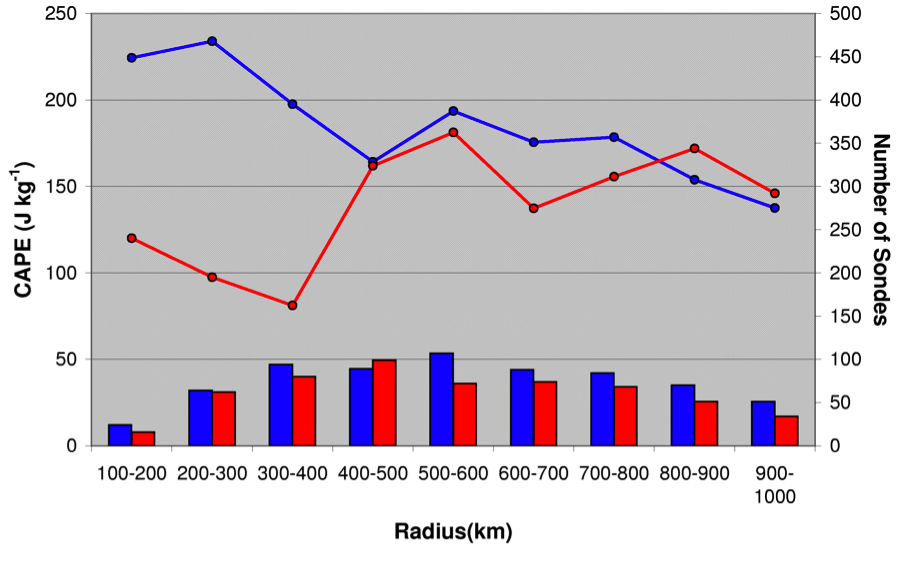Molinari, Romps, Vollaro, and Nguyen, CAPE in tropical cyclones, JAS, 2012
Paper
Description
Due to work by Corbosiero and Molinari in 2002 and 2003, it is known that more than 90% of the lightning strikes in a sheared hurricane occur in its downshear quadrant. This study uses observations -- over 2000 dropsondes released by NOAA's G-IV plane above hurricanes -- to find out why. The surprising result is that, by including convective entrainment and fusion in the calculations, the atmosphere is found to be twice as unstable (i.e., have twice as much CAPE) downshear as it is upshear. With the large number of sondes used in this study, it is also possible to examine the tails of the CAPE distributions, which extend to values twice as large downshear as they do upshear. This difference is driven by the downshear atmosphere having a higher boundary-layer entropy and a cooler and more humid mid-troposphere.
Mean CAPE (with entrainment and fusion) as a function of radius for the upshear (red line) and downshear (blue line) quadrants. The number of dropsondes in each quadrant is shown by the bars.
